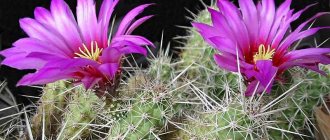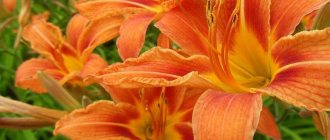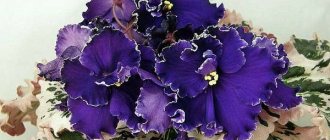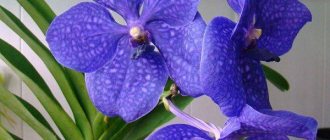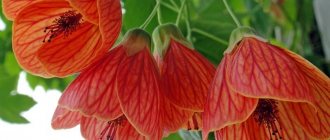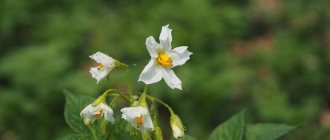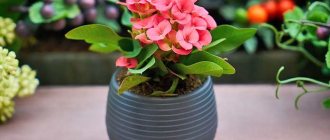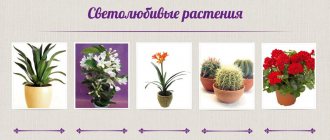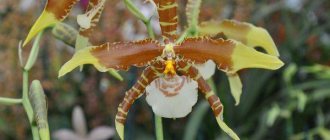Perennial ornamental shrubs
Let's start with the most popular perennial species, which have won the hearts of gardeners from different regions of Russia.
Park roses
During flowering, park roses are covered with lush double flowers of various shades. In everyday life, this is a very unpretentious plant that is suitable even for beginners.
Photo: pervocvet-shop.ru
Honeysuckle
The honeysuckle bush is densely covered with small leathery leaves that form a lush, dense crown. In summer it grows with small flowers with a delicate and delicate aroma. Honeysuckle is frost-resistant and not at all capricious.
Photo: kartoska.ru
Thuja
The evergreen coniferous shrub is very often used in gardening and landscaping. It fills the air with the characteristic aroma of pine needles. And besides, there are dwarf and tall varieties - for any green composition.
Photo: successful garden63.rf
Japanese maple
This ornamental shrub received its name for the characteristic shape of its fan-shaped leaves of bright green color. In autumn the shade changes to scarlet or even almost black. Japanese maple grows slowly and requires little pruning.
Photo: subscribe.ru
Hazel
Common hazel shrubs attract attention with beautiful serrated leaves, which acquire a spectacular crimson hue in autumn. Hazel needs good lighting and space.
Photo: oryol.vsesorta.ru
Basic selection rules
As can be seen from the above, the variety of types of shrubs provides the gardener with a wide range of opportunities for decorating a personal or garden plot. But how to choose a plant so that all the work on planting and caring for the seedling is not in vain. The most important requirements:
- compliance with the climatic zone;
- low maintenance requirements;
- availability of sufficient free space.
Most of the shrubs listed above retain their decorative value throughout the year thanks to their lush flowering, delicacy and brightly colored leaves. And some do not lose their aesthetics even after the leaves fall, pleasing the eye with bright fruits and berries.
The most frost-resistant ornamental shrubs
If you constantly worry about unexpected seasonal frosts or live in harsher regions, these options are for you!
Barberry
Barberry easily endures winters without shelter, and even if it freezes slightly, it recovers itself in the spring. Closer to summer, it is covered with cute small flowers, which then turn into fragrant berries.
Photo: pahls.com
Canadian roses
Not many people know, but Canadian roses are real record holders for cold resistance. The shrub tolerates frosts even down to -45 degrees, and also easily recovers on its own.
Photo: domashniecvety.ru
Hydrangea
Hydrangea combines a lot of pleasant benefits. It easily tolerates not only frosts, but also lack of light and high soil moisture. In addition, hydrangea can rightfully be called one of the most beautiful flowering shrubs.
Photo: zen.yandex.ru
Juniper
Juniper is regularly used in the design of hedges. Some of its species are not at all afraid of cold, moisture and shade, and moreover, they rather suffer from too bright scorching sun.
Photo: floraldreams.ru
Chubushnik
Depending on the type, mock orange consistently pleases with snow-white or pale pink flowers. It is very resistant to frost and shade, but it must be watered regularly.
Photo: astrussia.com
Chubushnik (75 photos): types, planting and care
Primrose
This is a low, compact plant. Flower growers all over the world love primrose for its bright flowers of a wide variety of colors - white, pink, purple, red, lilac. The center of the flower is most often yellow. The leaves are covered with dense fibers, which is why they appear fluffy and soft.
Flowers in May amaze with their diversity. You can also think of daisy, phlox, aquilegia, alyssum, brunera, swimsuit, poppy, hyacinth, petunia and many others. They are all beautiful in their own way, and each area has its own unique May flower.
Flowering ornamental shrubs
There are a lot of flowering shrubs among the ornamental shrubs, and for this section we have selected the most interesting and spectacular of them.
Weigela
Weigela is covered with spectacular purple bells by the end of spring, and remains so until the first cold weather. The shrub does not tolerate frosts well, but it loves shade.
Photo: lk-clover.rf
cotoneaster
Cotoneaster always pleases with its very long flowering, which lasts almost the entire spring. It is suitable for creating hedges, and is also valued in folk medicine.
Photo: ogorod.ru
Azalea
Garden azalea can be quite capricious, but its beauty fully pays for it. The most common varieties are those with white, pink and purple flowers.
Photo: proprikol.ru
Magnolia
Depending on the species, magnolia can be a tree or a shrub. Its huge flowers are known for their bright and strong scent. And in the fall the plant is covered with beautiful dark fruits, which remain even in winter.
Photo: goodfon.ru
Turn
Under natural conditions, the thorn stretches high and grows up to 3 meters. But in the garden it tolerates haircuts well, so it can even be shaped for a hedge. Sloe flowers are small, but there are a lot of them and they are very fragrant.
Photo: okora7.blogspot.com
Shrubs for hedges: names, photos and descriptions (catalog)
Features of flower beds made of white perennials
Each color has its own magic, evokes certain emotions and states of mind. But, perhaps, the majority associates only one thing with lightness, elegance, grace and purity - white. Beds of white flowers visually expand the garden area and bring a feeling of lightness and airiness. Landscape designers advise designing them in recreation areas, near a gazebo or pond. Then, during your walks, you will be able to enjoy the magnificence and radiance of white to the maximum, your state of mind will become calmer and more peaceful.
However, it is a mistake to think that designing a one-color flower bed is quite easy. With a competent design approach, you should take into account universal tips for creating flower beds, and recommendations that will help harmoniously embody the idea of monochrome.
When developing a flowerbed plan, you need to take into account the following nuances:
- White flower beds look advantageous against the contrasting background of hedges or trimmed lawns. But you should avoid light-colored buildings and fences.
- When choosing white perennials, you should take into account their requirements for soil quality, lighting, and frequency of watering.
- Perennial plants should make up at least 50% of the total number planted in the flowerbed. Annuals will be an important addition as they have earlier and longer flowering periods.
- The structure of a monochrome flower garden should have 3-4 tiers. In the lower part, decorative grasses should be actively used, and in the highest part, vines, shrubs or trees.
- Plants with different shapes of flowers and leaves should be placed nearby to avoid visual monotony.
- It is recommended to plant at least three specimens of the same species.
- It is necessary to take into account the time of budding of plants. At least two species should bloom in the flowerbed at the same time.
Attention! In the first year, you will only be able to create a “test sketch”. The result can be assessed no earlier than after 2 seasons, and all its splendor can be seen after 3 years.
Evergreen ornamental shrubs
Evergreen shrubs readily delight with their beauty all year round. We recommend paying attention to these varieties!
Boxwood
Boxwood is a landscaping classic among landscape designers. It takes root well, is not afraid of wind and drafts, feels great in the shade or in unfavorable soil, and also forms well when pruned.
Photo: ru.useful-plants.net
Mahonia holly
An interesting and unusual plant immediately attracts attention with its intricate carved leaves. And in the spring the bush becomes overgrown with the same bizarre spikelet inflorescences.
Photo: photokonkursy.ru
Arbutus
Most likely, you know this shrub under the name strawberry tree. And its fruits really resemble strawberries, only they are larger and tasteless. Arbutus grows slowly and decorates the area for years.
Photo: fcomfort.ru
Iberis
It is a heat-loving, evergreen and low-growing shrub that branches heavily. Dark green leaves form a lush, dense crown. During flowering, the buds cover the greenery almost completely.
Photo: cveti-sad.ru
Callistemon
This amazing plant amazes with its original inflorescences, which resemble multi-colored dust brushes. Callistemon blooms in summer, its leaves smell pleasant, and it adapts perfectly to any conditions.
Photo: geographylists.com
What are variegated shrubs and what are their features?
Variegated (variegated) shrubs, in essence, are artificially bred varieties of ordinary bush crops that have received characteristics from their parent plants. Variegated foliage has more than one color on the leaf blade.
The pattern can be uniform, with all the leaves the same, or random, with variations between leaves on different branches. Variegated foliage can sometimes be a natural tendency of the species, but can occasionally be the result of rare genetic mutations. Thanks to the magic of selection, these plant species can be reproduced and crossed to obtain the ornamental characteristics of shrubs.
Amazing leaf colors make variegated bushes more decorative and popular among landscape designers.
Variegated shrubs can be divided into two groups - evergreen and deciduous. To the group of evergreens it is also worth adding several coniferous shrubs with variegated needles.
The most unpretentious ornamental shrubs
Not all plants lend themselves easily and immediately to beginners. But we have selected the most unpretentious shrubs that anyone can handle!
Derain
And in particular - white derain with its beautiful two-color leaves. This shrub is also beautiful in the fall, when it turns rich burgundy. Derain takes root in almost any conditions and soil.
Photo: yandex.ru
Snowberry
White and pink snowberry are easily recognized by the characteristic large fruits that cover it in the fall. With age, the shrub grows up to 1.5 meters, and almost twice as wide.
Photo: postila.ru
Bloodroot
Shrub cinquefoil can be very different - very miniature or impressive and spreading. The shades and shape of the inflorescences differ, but all varieties are united by excellent immunity, light-loving nature and resistance to drought.
Photo: belvedor.com
Deytsia
Deytsia is notable for its complete indifference to the type of soil on which it grows. The main thing is that there is no stagnation of moisture. In addition, the plant feels equally at home in the sun or in the shade, but by winter the branches need to be bent to the ground.
Photo: distano.ru
Bladderwort
Bladderwort is a very versatile garden shrub. It is not afraid of frost or lack of sun, and is also quite resistant to diseases and parasites. There are different types - with golden or purple foliage.
Photo: plantmania.ru
What to plant along the fence: the best plants
Hydrangea
Hydrangea can be considered a classic plant for garden decoration. All representatives of the culture are large in size and require a lot of space for planting. The bush grows not only tall, but also spreading. White varieties include representatives of two varieties of hydrangea - tree and paniculate.
“White lady” and “Grandiflora” look interesting. The inflorescences of the plant are simply gigantic in size - up to 25 cm. The plant blooms in mid-summer and continues to bloom until frost. In winter, it is better to cut off the inflorescences, since under the weight of snow they can break off, damaging the shoots.
The blossoming flowers are initially snow-white in color, and then acquire a greenish tint. A prerequisite is planting in acidic soil. It is advisable that on the north side the bush is protected from the wind by buildings or a fence. Hydrangeas also like the sun.
The best ornamental shrubs for the Moscow region
These beautiful ornamental species thrive in the changeable climate of the Moscow region. So feel free to choose options for your dacha!
European forsythia
The bright yellow flowers bloom in early spring and will brighten up the area just after the dark, gray winter. Forsythia grows well in width, but does not tolerate excess moisture at the roots.
Photo: oir.mobi
Spiraea Wangutta
The shrub thrives in changeable conditions, and even in large cities. Spirea blooms with lush snow-white inflorescences, and in favorable weather in good seasons - even twice a year.
Photo: spb.tiu.ru
Louiseania triloba
This shrub is good any time because it is covered in delicate pink flowers in spring, and by fall the foliage turns a bright orange hue. Louiseania loves good light and needs protection from strong winds.
Photo: pro-orehi.ru
Japanese quince
The culture attracts with very beautiful bright flowers in all shades of pink, orange or white. By mid-autumn it bears fruit. Despite its exotic origin, this quince thrives in the Moscow region, both on wet and sandy soils.
Photo: kurskaya-obl.tiu.ru
Mallow
This plant is also called the stock rose for the similarity of its double inflorescences to the flowers of the queen of the garden. The bush does not take up much space in width, but it grows up to 2 m in height. The plant is often planted in the background of a flower garden or near a wall. Mallow is unpretentious and easily propagated by seeds.
4 common types of garden violets that will become an indispensable flowerbed decoration
Stock rose flowers come in a wide variety of colors; a plant with white buds looks delicate and solemn. Mallow blooms from June to August. The flower bed where this plant is planted will never look empty.
Perennials include the following types of mallow: musky (nutmeg), wrinkled, hybrid, Sudanese. The snow-white representative of the muscat rose “White Tower” looks impressive. The plant continues to bloom until frost.
Clematis
The exotic perennial vine clematis has taken root well in our mid-latitudes. Among its many diverse species, varieties and hybrids, you may well find more or less unpretentious forms that begin flowering as early as May.
Clematis needs regular watering (at least 1-2 times a week), loosening the soil, timely removal of weeds, organic feeding 2 times a month throughout the growing season, pruning and covering for the winter. In addition, this plant loves light, nutritious and loose soil, and does not tolerate strong winds and stagnant water. But if these requirements are met, clematis will certainly delight you with abundant flowering.
- The most unpretentious varieties of clematis with photos and descriptions
A selection of clematis varieties that novice gardeners should take a closer look at.
Tulip
Well-known and beloved tulips have so many shapes, varieties and varieties that even the most capricious gardener will choose a flower to suit his taste - including the flowering period.
In May, you will be able to delight with the bright colors of simple and double early tulips, Triumph tulips, Darwin hybrids, lily-flowered tulips, Rembrandt tulips, some fringed and green-colored ones... And if you don’t know how they differ from each other, our detailed material is for you to help.
- 15 main types of tulips - do you have everything (photos, descriptions, varieties)
All classes of tulips in one article
May lily of the valley
The very name of this low-growing herbaceous perennial indicates the time of its flowering. The delicate snow-white, pot-bellied bells of its inflorescences with a magnificent aroma against the background of wide green leaves usually bloom in mid-May and delight the eye for about a month. Recently, unusual varieties of lily of the valley have been developed - for example, with large double flowers or striped leaves.
The flower is unpretentious, frost-resistant, and tolerates partial shade. It loves soil rich in organic matter, a moderately moist place, where it can grow for many years, spreading in all directions.
The entire lily of the valley plant is very poisonous - be careful if you regularly have small children or pets in your area. You also need to be careful when cutting flowers and propagating by dividing the rhizome.
